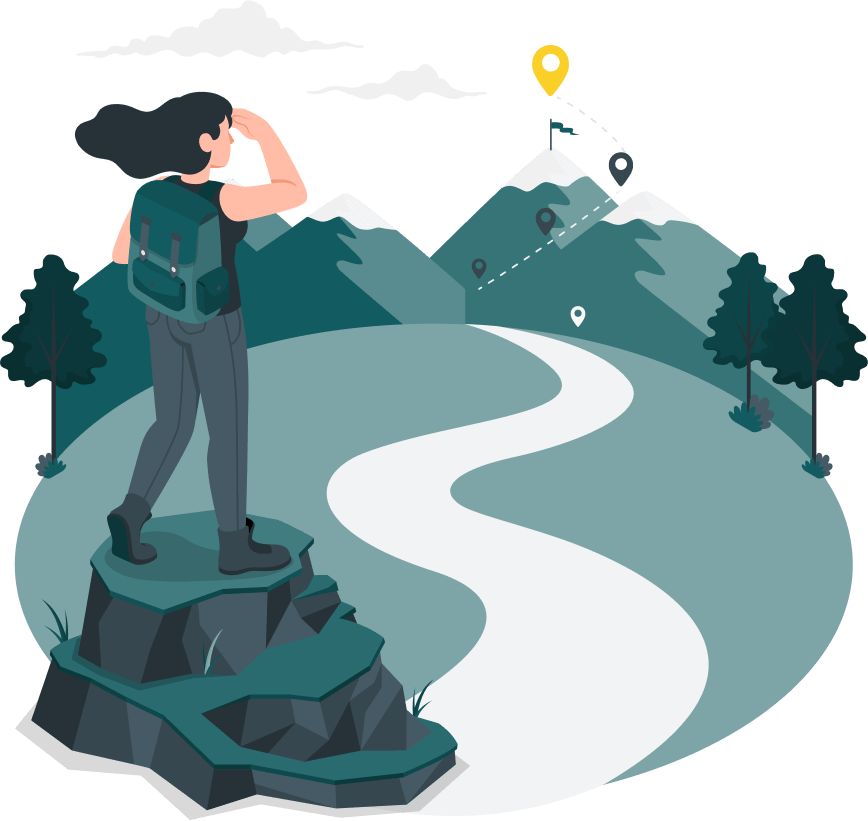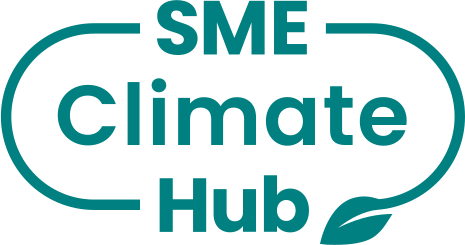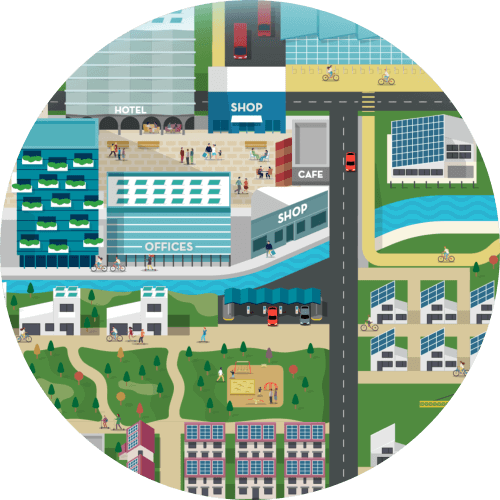See the steps your company can take towards a more sustainable future through our open resources.
Giki Social Enterprise's Climate Report
Introduction *
Commitment And Targets *
Own emissions *
Value chain emissions *
(optional)Actions and plans to reduce emissions *
Climate Solutions *
(optional)Management and strategy *
(optional)Results, challenges and outlook *
Introduction *
reporting year
*2023
number of employees in the reporting year
*11
Commitment And Targets *
net zero target year
*2020
Base year
*2020
comment on your net zero targets
*Giki set a Net Zero target from 2020 calculating emissions from operations (Scope 1,2,3) and then using offsets for residual emissions that we could not reduce in a given year. Each year Giki looks for actions that will further reduce our gross emissions.
near-term scope 1 target
*-
target year
*2025
near-term scope 2 target
*-
target year
*2025
near-term scope 3 target
*50
target year
*2025
comment on your near-term targets
*We are looking to reduce our Scope 3 emissions by 50% by the end of 2025. We will continue to offset any residual emissions. As a fully remote organisation with no facilities Giki does not have any Scope 1 or 2 emissions.
Own emissions *
scope 1 emissions
scope 1 emissions (metric tons co2e)
*0.00
own facilities
*N/A
own vehicles
*N/A
own processes
*N/A
scope 2 emissions
scope 2 emissions (metric tons co2e)
*0.00
purchased electricity
*N/A
Renewable electricity (%)
-
purchased steam
*N/A
Renewable electricity (%)
-
purchased heating
*N/A
Renewable electricity (%)
-
purchased cooling
*N/A
Renewable electricity (%)
-
Comment on your energy consumption
*Giki is a fully remote organisation and so does not have any Scope 2 emissions. Home working is included in Scope 3 emissions.
Value chain emissions (optional) *
scope 3 emissions
scope 3 emissions (metric tons co2e)
*5.72
supply chain related - upstream emissions
purchased goods and services
*0.092
metric tons CO2ecapital goods
*N/A
fuel and energy related activities
*N/A
transportation and distribution (upstream)
*N/A
waste in operations
*N/A
business travel
*1.091
metric tons CO2eemployee commuting
*4.524
metric tons CO2eleased assets (upstream)
*N/A
customer related - downstream emissions
transportation and distribution (downstream)
*N/A
processing of sold products
*N/A
use of sold products
*0.012
metric tons CO2eend-of-life treatment of products
*N/A
leased assets (downstream)
*N/A
franchises
*N/A
investments
*N/A
describe the calculation methodology and comment on accuracy:
*We employ usage information in order to assess our carbon footprint. For example to calculate business travel we look at distance travelled by mode of transport. For purchased goods and services (primarily IT spending) we look at server utilisation and country emissions factors. As a remote first organisation the largest part of our Scope 3 emissions is working from home included in commuting section. For this we use Defra conversion factors but augment this data using information from an employee survey asking questions including: whether employees use renewable electricity, type of heating (i.e. heat pump vs gas boiler), heating months over the year. We also use the survey to find ask colleagues about blockers to saving more energy at home to further our future carbon reductions. The increase in home working emissions year over year reflects the change to this methodology from 2022.
Actions and plans to reduce emissions *
Scope 1 Actions
own facilities
N/A
No Scope 1 emissions.
own vehicles
N/A
No Scope 1 emissions.
own processes
N/A
No Scope 1 emissions.
scope 2 actions
purchased electricity
N/A
No Scope 1 emissions.
purchased steam
N/A
No Scope 1 emissions.
purchased heating
N/A
No Scope 1 emissions.
purchased cooling
N/A
No Scope 1 emissions.
scope 3 actions
supply chain related (upstream)
purchased good and services
*Yes
The primary component of our purchased goods and service footprint comes from IT services to support our digital platform. We conduct ongoing reviews of the amount of server capacity we need in order to achieve this balancing carbon emissions and reliability. We will continue to look for savings in this area in 2024 in particular in relation to the size of the database server we use.
capital goods
*N/A
-
fuel and energy related activities
*N/A
-
transportation and distribution (upstream)
*N/A
-
waste in operation
*N/A
-
business travel
*No
We constantly monitor the amount of business travel needed and already ensure that all travel is done by public transport.
employee commuting
*Yes
Remote first organisation so no emissions from commuting. However, the largest part of our emissions comes from home working. In 2024 we conducted a "Working from Home Challenge" to help colleagues understand the actions they can take at home to save carbon, and money. As part of this we conducted a survey to look at energy use at home including fuel types. We will use this information to help individuals reduce their working from home footprints through a combination of small actions (e.g. turning off devices), more material actions (e.g. adjusting temperature settings) and look for ways to promote fully electrification, powered by renewables, for home heating.
upstream leased assets
*N/A
-
customer related (downstream)
transportation and distribution (downstream)
*N/A
-
processing of sold products
*N/A
-
use of sold products
*No
The amount of energy used by individuals access Giki Zero on their device is extremely small without material carbon savings available.
end-of-life treatment of products
*N/A
-
leased assets (downstream)
*N/A
-
franchises
*N/A
-
investments
*N/A
-
i have asked my suppliers to halve emissions before 2030 and join the un-backed race to zero campaign
*No
i have communicated my commitment and actions to my business customers and asked them to join the un race to zero
*No
Climate Solutions (optional) *
What percentage of your total revenue comes from sales of climate solutions?
*100
Provide descriptions/names of your climate solutions:
*We run an employee engagement programme to help companies engage their staff on sustainability. This is delivered through challenges which encourage participants to reduce emissions at home and at work by providing them with the information, and inspiration, to take action. Over 90,000 people have now participated in Giki Zero and we have worked with over 100 companies around the world including large multinationals. We are a Race to Zero Accelerator for employee action.
Methodology used to assess these as climate solutions:
*Giki Zero combines a detailed, science based, carbon footprint tool and over 200 steps to help people find ways to reduce their emissions at home and at work. This is publicly available at: https://giki.earth/methodology/. We use this methodology to assess the carbon avoided from individuals and companies who participate in the Giki Zero programme.
How much of your research and development budget is allocated to climate solutions?
*100
are you investing in climate and/or nature outside your value chain?
*No
Management and strategy (optional) *
Results, challenges and outlook *

Giki Social Enterprise's Climate Report
Giki Social Enterprise's Climate Report - 2023
Introduction *
reporting year
*2023
number of employees in the reporting year
*11
Commitment And Targets *
net zero target year
*2020
Base year
*2020
comment on your net zero targets
*Giki set a Net Zero target from 2020 calculating emissions from operations (Scope 1,2,3) and then using offsets for residual emissions that we could not reduce in a given year. Each year Giki looks for actions that will further reduce our gross emissions.
near-term scope 1 target
*-
target year
*2025
near-term scope 2 target
*-
target year
*2025
near-term scope 3 target
*50
target year
*2025
comment on your near-term targets
*We are looking to reduce our Scope 3 emissions by 50% by the end of 2025. We will continue to offset any residual emissions. As a fully remote organisation with no facilities Giki does not have any Scope 1 or 2 emissions.
Own emissions *
scope 1 emissions
scope 1 emissions (metric tons co2e)
*0.00
own facilities
*N/A
own vehicles
*N/A
own processes
*N/A
scope 2 emissions
scope 2 emissions (metric tons co2e)
*0.00
purchased electricity
*N/A
Renewable electricity (%)
-
purchased steam
*N/A
Renewable electricity (%)
-
purchased heating
*N/A
Renewable electricity (%)
-
purchased cooling
*N/A
Renewable electricity (%)
-
Comment on your energy consumption
*Giki is a fully remote organisation and so does not have any Scope 2 emissions. Home working is included in Scope 3 emissions.
Value chain emissions (optional) *
scope 3 emissions
scope 3 emissions (metric tons co2e)
*5.72
supply chain related - upstream emissions
purchased goods and services
*0.092
metric tons CO2ecapital goods
*N/A
fuel and energy related activities
*N/A
transportation and distribution (upstream)
*N/A
waste in operations
*N/A
business travel
*1.091
metric tons CO2eemployee commuting
*4.524
metric tons CO2eleased assets (upstream)
*N/A
customer related - downstream emissions
transportation and distribution (downstream)
*N/A
processing of sold products
*N/A
use of sold products
*0.012
metric tons CO2eend-of-life treatment of products
*N/A
leased assets (downstream)
*N/A
franchises
*N/A
investments
*N/A
describe the calculation methodology and comment on accuracy:
*We employ usage information in order to assess our carbon footprint. For example to calculate business travel we look at distance travelled by mode of transport. For purchased goods and services (primarily IT spending) we look at server utilisation and country emissions factors. As a remote first organisation the largest part of our Scope 3 emissions is working from home included in commuting section. For this we use Defra conversion factors but augment this data using information from an employee survey asking questions including: whether employees use renewable electricity, type of heating (i.e. heat pump vs gas boiler), heating months over the year. We also use the survey to find ask colleagues about blockers to saving more energy at home to further our future carbon reductions. The increase in home working emissions year over year reflects the change to this methodology from 2022.
Actions and plans to reduce emissions *
Scope 1 Actions
own facilities
N/A
No Scope 1 emissions.
own vehicles
N/A
No Scope 1 emissions.
own processes
N/A
No Scope 1 emissions.
scope 2 actions
purchased electricity
N/A
No Scope 1 emissions.
purchased steam
N/A
No Scope 1 emissions.
purchased heating
N/A
No Scope 1 emissions.
purchased cooling
N/A
No Scope 1 emissions.
scope 3 actions
supply chain related (upstream)
purchased good and services
*Yes
The primary component of our purchased goods and service footprint comes from IT services to support our digital platform. We conduct ongoing reviews of the amount of server capacity we need in order to achieve this balancing carbon emissions and reliability. We will continue to look for savings in this area in 2024 in particular in relation to the size of the database server we use.
capital goods
*N/A
-
fuel and energy related activities
*N/A
-
transportation and distribution (upstream)
*N/A
-
waste in operation
*N/A
-
business travel
*No
We constantly monitor the amount of business travel needed and already ensure that all travel is done by public transport.
employee commuting
*Yes
Remote first organisation so no emissions from commuting. However, the largest part of our emissions comes from home working. In 2024 we conducted a "Working from Home Challenge" to help colleagues understand the actions they can take at home to save carbon, and money. As part of this we conducted a survey to look at energy use at home including fuel types. We will use this information to help individuals reduce their working from home footprints through a combination of small actions (e.g. turning off devices), more material actions (e.g. adjusting temperature settings) and look for ways to promote fully electrification, powered by renewables, for home heating.
upstream leased assets
*N/A
-
customer related (downstream)
transportation and distribution (downstream)
*N/A
-
processing of sold products
*N/A
-
use of sold products
*No
The amount of energy used by individuals access Giki Zero on their device is extremely small without material carbon savings available.
end-of-life treatment of products
*N/A
-
leased assets (downstream)
*N/A
-
franchises
*N/A
-
investments
*N/A
-
i have asked my suppliers to halve emissions before 2030 and join the un-backed race to zero campaign
*No
i have communicated my commitment and actions to my business customers and asked them to join the un race to zero
*No
Climate Solutions (optional) *
What percentage of your total revenue comes from sales of climate solutions?
*100
Provide descriptions/names of your climate solutions:
*We run an employee engagement programme to help companies engage their staff on sustainability. This is delivered through challenges which encourage participants to reduce emissions at home and at work by providing them with the information, and inspiration, to take action. Over 90,000 people have now participated in Giki Zero and we have worked with over 100 companies around the world including large multinationals. We are a Race to Zero Accelerator for employee action.
Methodology used to assess these as climate solutions:
*Giki Zero combines a detailed, science based, carbon footprint tool and over 200 steps to help people find ways to reduce their emissions at home and at work. This is publicly available at: https://giki.earth/methodology/. We use this methodology to assess the carbon avoided from individuals and companies who participate in the Giki Zero programme.
How much of your research and development budget is allocated to climate solutions?
*100
are you investing in climate and/or nature outside your value chain?
*No
Management and strategy (optional) *
Results, challenges and outlook *
Not sure how to start?
See the steps you can take and get help building a plan to cut your business emissions today.
¿No estás seguro de por dónde empezar?
Revisa los pasos que puedes dar y obtén ayuda para elaborar un plan para reducir las emisiones de tu empresa hoy mismo.
لست متأكداً كيف تبدأ؟
اطلع على الخطوات التي يمكنك اتخاذها واحصل على المساعدة في وضع خطة لخفض انبعاثات شركتك اليوم.
Vous ne savez pas par où commencer ?
Découvrez les mesures que vous pouvez prendre et obtenez de l’aide pour élaborer un plan pour réduire les émissions de votre entreprise dès aujourd’hui.
Osäker på hur du ska börja?
Se vilka steg du kan ta och få hjälp med att utforma en plan för att minska dina företagsutsläpp idag.
Ready to commit to lower emissions?
It’s easy to make the commitment. Just complete a form sharing your intent to reduce your emissions.
You’ll earn public recognition for taking the first step.
¿Listo para comprometerte a reducir tus emisiones?
Es fácil comprometerse. Solo tienes que completar un formulario compartiendo tu intención de reducir tus emisiones.
Ganarás reconocimiento público por tomar este primer paso.
هل أنت مستعد للالتزام بتقليل الانبعاثات؟
الالتزام سهل. ما عليك سوى تعبئة نموذج لمشاركة عزمك على تقليل انبعاثاتك.
سوف تحظى باعتراف عام باتخاذك الخطوة الأولى.
Prêt à vous engager pour réduire les émissions ?
S’engager est simple. Il suffit de remplir un formulaire indiquant votre intention de réduire vos émissions.
Vous gagnerez une reconnaissance publique pour avoir fait le premier pas.
Redo att åta sig att minska utsläppen?
Det är enkelt att göra åtagandet. Fyll bara i ett formulär där du delar med dig av din avsikt att minska dina utsläpp.
Du kommer att få offentligt erkännande för att du tagit det första steget.
Register now to use our tools
Register now to use our tools

Stay updated!
Sign up for our newsletter to stay updated with the latest climate developments.
Log in
Don't have an account? Create account to access our tools or make the SME Climate Commitment
Log in
Don't have an account? Create account to access our tools or make the SME Climate Commitment
Log in
Don't have an account? Create account to access our tools or make the SME Climate Commitment
Forgot password?
Please enter your email address. You will receive a link to create a new password via email.

 Go back
Go back

